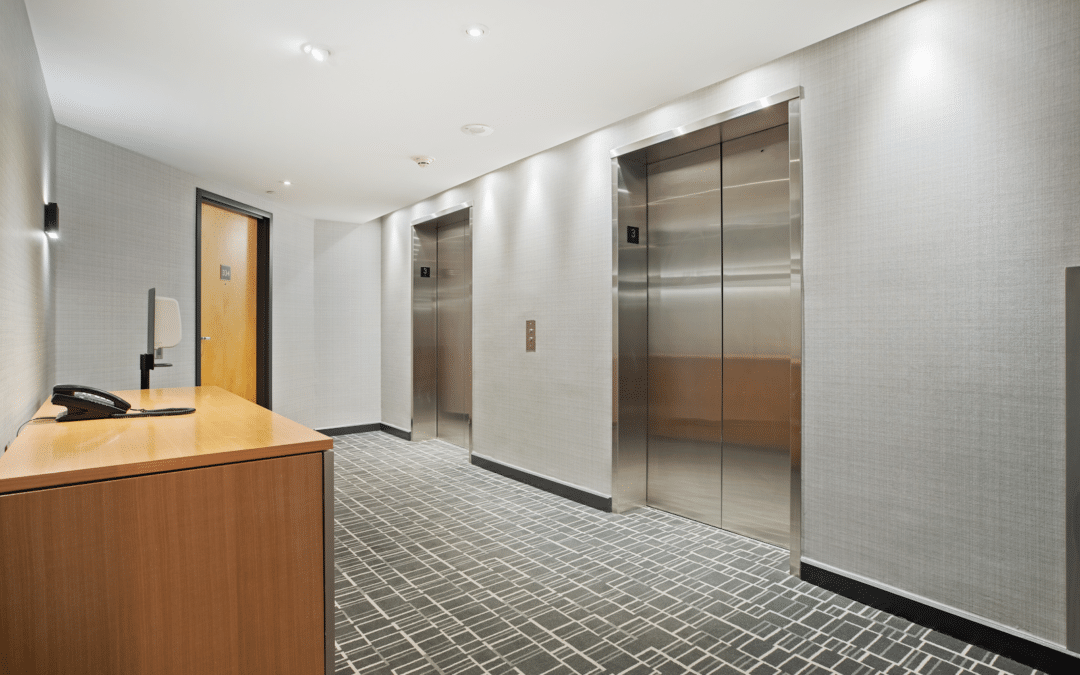
If you’re the owner of a commercial property, one of the main considerations you should have is accessibility between floors. New and existing buildings should have an adequate amount of commercial lifts depending on how many floors are in your multi storey building.
Recent research has found that 23% of disabled people reported that lack of disabled access lifts was a common problem for them when visiting commercial buildings.
But what are the building regulations in regards to installing a passenger lift or platform lifts in commercial properties? As a business or building owner do you have any obligation to fulfil in regards to the Equality Act 2010?
In this guide we’ll walk you through when a lift is required in a commercial building or public access building, and why you should conform to the Equality Act to help create a more inclusive commercial environment.
What are the building regulations in regards to lifts?
Most business structures with two or more floors must have a lift installed. A lift not only increases value by facilitating faster access up and down the building, it also enables the building owner to comply with accessibility regulations.
Equality Act 2010
A building’s or other property’s physical characteristics could occasionally make it more challenging for a person with a disability to enter or use it.
The Disability Discrimination Act (DDA) of 1995, which is no longer in effect, is included in the Equality Act of 2010, which consolidates and reinforces earlier equal rights laws.
The Equality Act says there is a need to make reasonable adjustments if you’re placing someone at a substantial disadvantage because of their disability compared to non-disabled persons. The goal is for everyone to move through a building conveniently and comfortably in both a vertical and horizontal direction.
Building Regulations – Part M
The Building Regulations’ Part M addresses accessibility. The Equality Act’s requirements for publicly accessible buildings are outlined in Approved Document M, Volume 2, which also applies to structures other than residences.
In regards to passenger moving lifts and platform lifts the regulation summarises:
- A passenger lift is the best type of access for people to move from one level to another in all structures.
- Although not an exact substitute for a passenger lift, an upward lifting platform (platform lift) may be regarded as an alternative option for facilitating access for people with impaired mobility for existing buildings and in exceptional cases for construction projects with particular constraints (such as a listed building.)
British Standards
The design of buildings and its ability to accommodate the needs of people with disabilities are covered by British Standard BS 8300 2009+A1:2010. This code of practice suggests that in multi-storey buildings, at least one lift be big enough for wheelchair users to use.

What are the design guidelines for an accessible lift?
For accessible lifts, best practice, when installing a lift you should meet this criteria:
- Easily accessible.
- Is big enough for what it’s used for.
- Provides room for manoeuvring outside.
- Is equipped with lift controls that are simple to locate and recognise.
- Has both visual and audible signals installed.
- Has a wide entrance that is clearly visible.
- Has adequate illumination inside the vehicle and on all stairwells.
- Stops precisely to ensure easy entry and departure.
- Undergoes regular lift maintenance to ensure working order at all times.
The Future Lift Services expert technicians are up to date with all lift requirements for office buildings and we will take care of your installation and maintenance with care.
3 considerations when installing passenger lifts in commercial buildings
Once the need for elevators for commercial buildings has been established, there are a number of factors that developers should take into account, regardless of whether the lift will be the only one in the building or will be a second lift for additional access. Here we’ll highlight specific lift requirements you need to take into account:
- Size and capacity
It’s really important to consider and estimate how many people will be using that lift at one time to decide the size of the lift needed.
To accommodate any wheelchair and other passengers, Part M suggests a larger lift with dimensions of 2000 mm wide by 1400 mm deep, which allows a wheelchair or frame user to turn through 180 degrees. This is similar to a lift that can hold 17 people.
- Traffic flow
The frequency of movement between floors throughout the day should be taken into account by specifiers. Are there times of the day when the lift is most in demand, but less so elsewhere?
How is the traffic situation? For instance, there can be traffic in an office at the beginning, middle, and end of the workday, whereas a lift at a retail establishment might be much more consistent throughout the day.
Adequate signs and a location near the steps are required to make your lift completely accessible to those who need to use it. It’s important to take the building’s and lift’s lifespan into account. Is the building’s current use permanent, or may it change in terms of how people utilise it?
- People using the lift
It is important for specifiers to think about who will use the lift and how they will use it. Who will use the building and in what capacities? Can they operate the elevator on their own? Will they be transporting goods or luggage?
The lift installation team should be able to advise the building owner on the appropriate lift provision for the building type.
Looking for lift solutions for your commercial building?
Everyone has the right to be able to access all public areas of a building, no matter the size or height.
Passenger lifts and platform lifts are an excellent solution for accessibility, and can be fully customised to meet your requirements.
We are experts in lift installation, maintenance, and modernisation for all types of commercial and residential facilities throughout the United Kingdom. We are convinced that with over 25 years of experience, we can provide you with a high-quality service that matches your individual demands and expectations.
Get in touch with us today to find out more about our modern lift services or to request a free, no-obligation quote with us, based in London and Essex!
When is a lift required in a commercial building FAQs
How many floors before a lift is required?
A vertical passenger lift ought to be put in commercial buildings with two stories or more to guarantee that the space is appropriate for all occupants. A platform lift can also be installed for those with accessibility needs.
How many lifts are required in a building in the UK?
Multi-story buildings should have at least one lift, and the design should be wheelchair-accessible in terms of scale. Making sure the platform lift is readily visible and in an open space is another approach to guarantee that your new lift is accessible and that it complies with British standards and construction requirements.
Is lift maintenance statutory?
According to the LOLAR 1998 laws, if you own, manage, or have authority over a lift in the workplace, you must make sure that it goes through a comprehensive inspection on a regular basis. This is done to make sure the machinery is secure for operation. A ‘competent individual’ must conduct the examination. There are many passenger lift safety rules which need to be considered when installing and maintaining the lifts.

